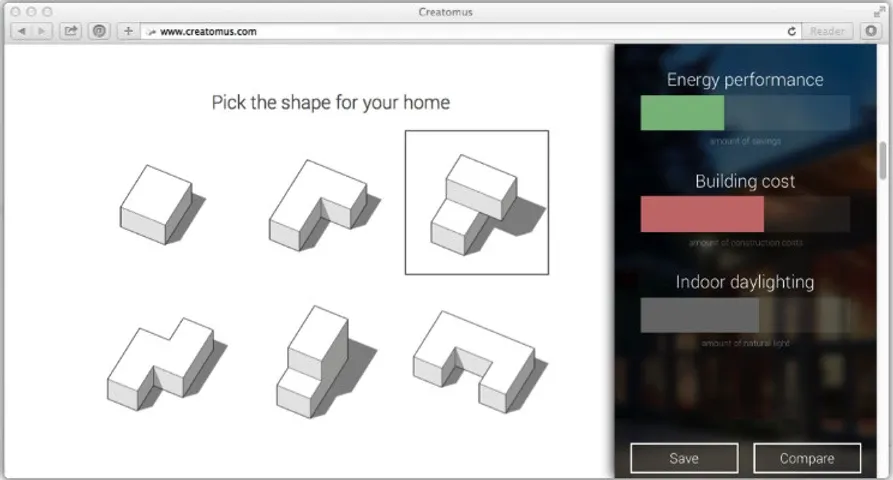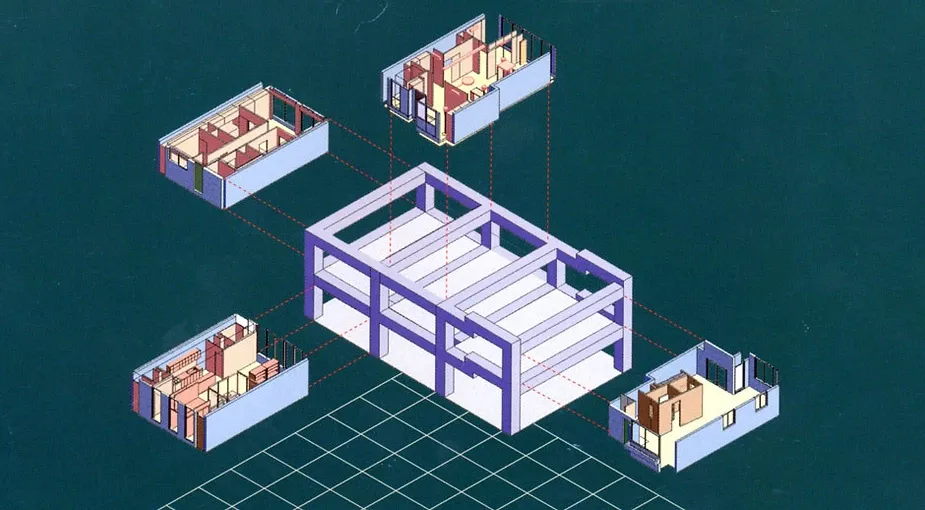Mass-customized housing
Detailed architectural models can be nowadays easily displayed online. With maturing of WebGL it has become possible to even build applications that manipulate complex 3D geometry directly in web-browsers. While BIM technologies are clearly influenced and moving towards cloud (i.e Autodesk Forge platform), the vast majority of housing providers are still far behind. But some of them getting ready to offer home buyers the user experience that compares to that offered by mass-customized product manufacturers.

Dr Stephen Kendall points out that one of the reasons why products such as cars are more suitable for mass-customization is their inherent ‘placelessness’. Another reason why product manufacturers are ahead of the game is because they are operating with big volumes and can afford to invest into novel web technologies. Also, construction industry has been lagging behind partly because most of construction projects are unique - tightly connected to their surroundings and cultural context. As a consequence, there is no widely accepted workflow and software that makes mass-customization of houses possible. Nevertheless, there have been several attempts that are briefly covered in the following sections.
Perhaps one of the earliest and the best known mass-customization system has been popularised by John Habraken. The methodology that is now known as Open Building recognizes that users / inhabitants may make design decisions as well as design professionals. In order to distinguish between different levels of intervention, the building is divided into two parts: the base building or the shell and the infill or fit-out. There are number of companies that offer fit-out systems (e.g. Infill Systems in US) and also a concept called Superlofts for delivering base buildings - a bare structure in which home owners can design and build their own dream house. However, while Open Building has been proved financially and constructionally viable approach, the customisation process is still carried out in a traditional way.
 Image courtesy: Kodan Skeleton and Infill, Japan
Image courtesy: Kodan Skeleton and Infill, Japan
Quite recently a new type of building configurators have surfaced. In such configurators the user is actually interacting with 3D model guided by some quantitative information retrieved from the model in real time. For example, Studio Shed’s Configurator is a good example where design customization aligns with the production efficiency. Similarly to many online car configurators, this web solution is one-off configurator where the building (shed) model is tightly coupled with the customization mechanism and the user interface of the system.
In this respect Woonconnect seems to be a more scalable solution. It is built on top of a digital library of building components provided by over a hundred different manufacturers. These components can be integrated with building applications and thus Woonconnect allows users to create new house designs.
The latter application has many features that a modern house configurator should have – it is interactive, the user can manipulate 3D models directly, it has a freedom of navigation and is information rich. However, there is not much information available about technical architecture of the system and therefore it is difficult to assess whether it is also sufficiently simple for creating new configurators – something that is needed for achieving scalability of the system.